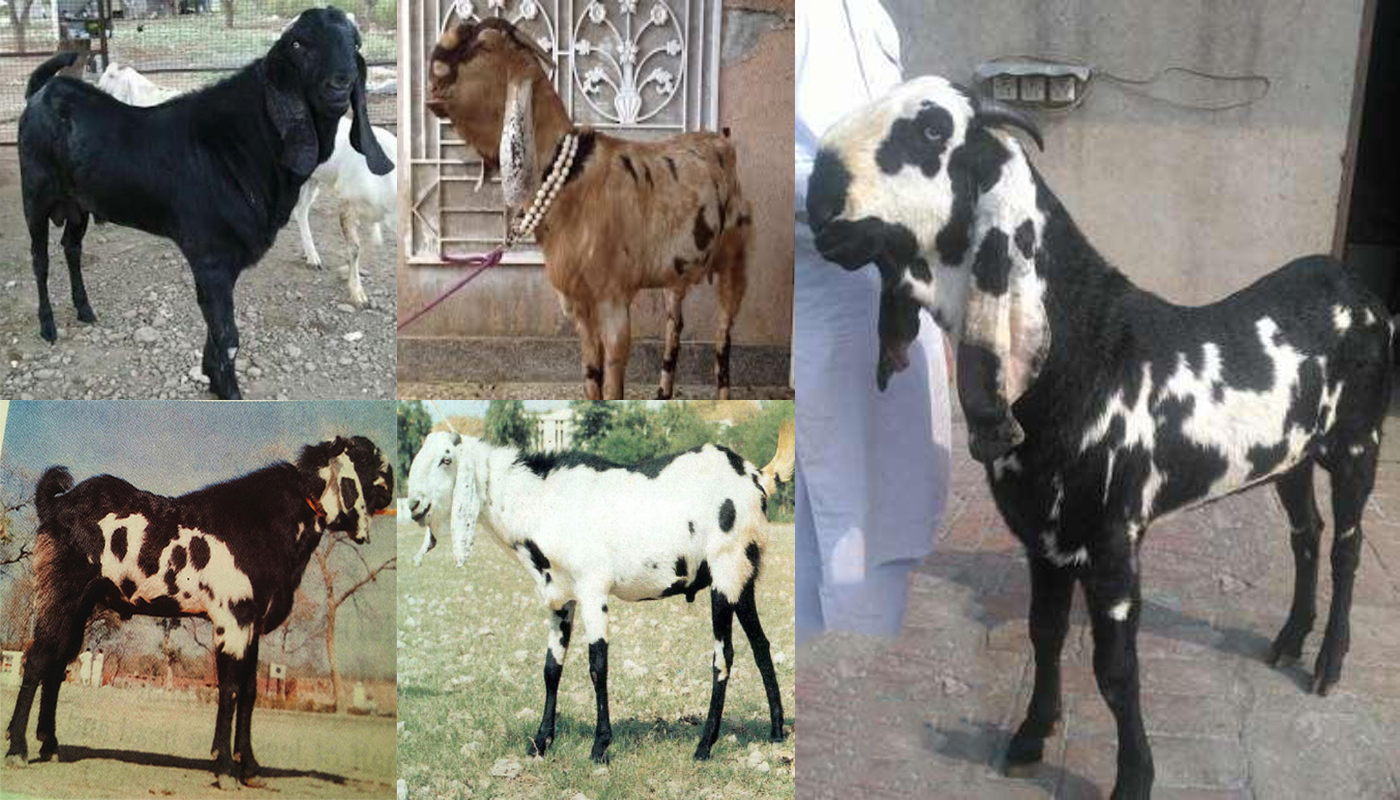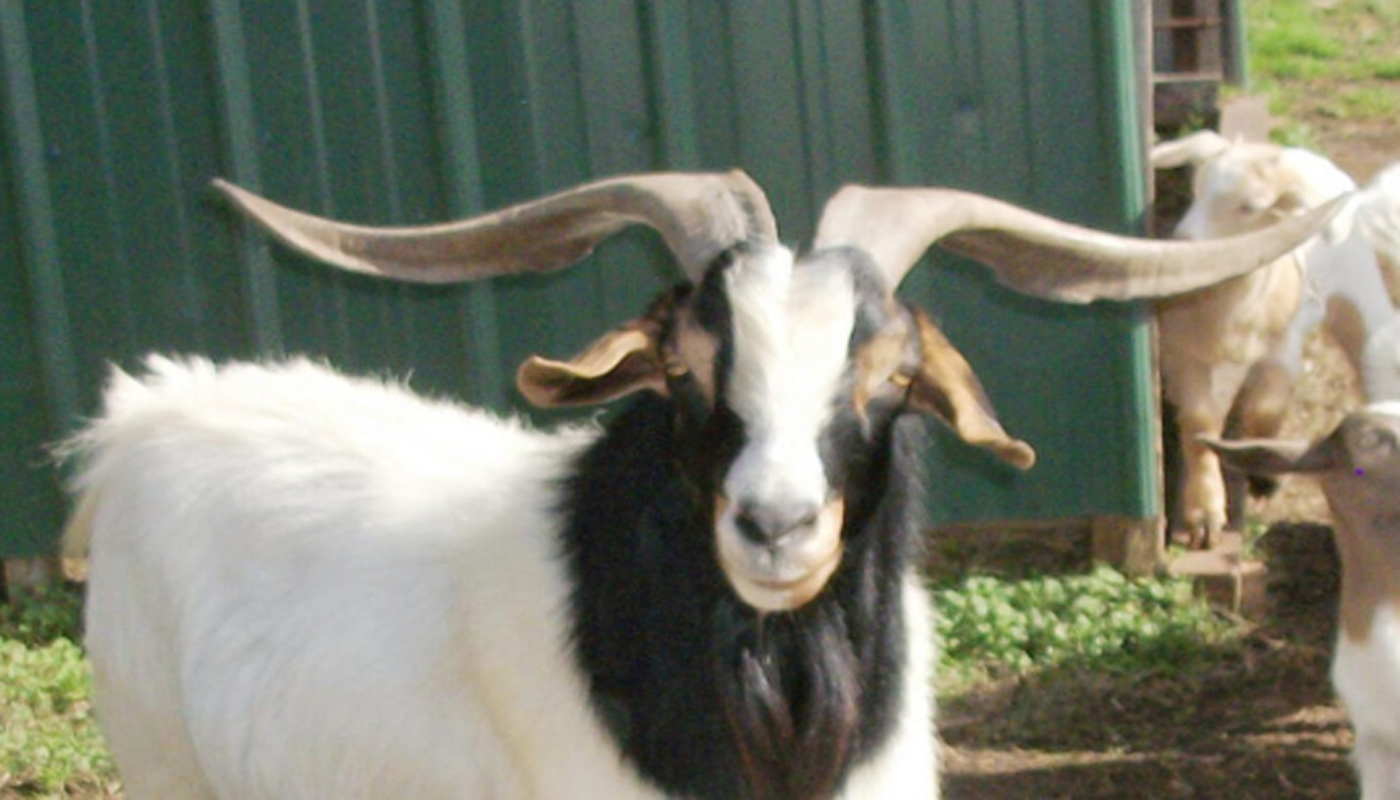
This beautiful goat with long floppy ears, a soft coat that usually has spots on it and fluffy hindquarters. They are sweetly dispositioned goats that are really friendly and do not mind being handled by humans. They are pretty hardy and adapt well to most environment plus they give their owners a lot of fresh, nutritious milk and their meat can also be used.
Jamnapari Goat Quick Profile Overview
| The Jamanapari Goat breed of sweet and friendly with nutritiously sweet goats milk | |
| Country of Origin: | India |
| Other Names: | Jamunapari |
| Breed Size: | Large |
| You may Also Like: | Top 12 Large to Largest Goat Breeds |
| Main Purpose: | Milk |
| Can be used for | Breeding, Meat, Milk, Pets |
| You may Also Like: | Top 10 Best Dairy Goat Breeds |
| You may Also Like: | 10 Best Goat Breeds for Meat Production |
| Temperament: | Easy going, calm, friendly and gentle |
| Good with Kids? | They can be a good family pet, but they do have horns, so children must always be supervised around them. |
| You may Also Like: | 10 Best Goat Breeds to Keep as Pet |
| Ideal Environment: | Medium to large pasture with lots of greenery | Ideal Climate: | All Climates |
| Conservation Status: |
No Listed by the *ALC Status Common |
| Health Issues? | No known health issues |
| Good Starter Goat? | Yes, they make a good starter good |
| Goat Associations: | No known goat associations |
| Goat Clubs: | No known breeders clubs |
| Note: *ALC stands for American Livestock Conservancy | |
PHYSICAL CHARACTERISTICS
| They have a large body and longer legs than a lot of goat breeds. Their hindquarters are very fluffy with long hair. They also have longer hair on their thighs. | ||
| Color(s): |
Yellow, brown, white, black and then there are mixed color variations Both doe and buck are the same |
|
| Goat⇒ | Doe | buck |
| Breed Weight: | 132 lbs. | 198 lbs. |
| Breed Height: | 79 inches at withers | 89 inches at withers |
| Hair: | Medium to long | Medium to long |
| Ears: | Long and droopy that can twist | Long and droopy that can twist |
| Horns: | Short and stocky with a slight curve backwards | Short and stocky with a slight curve backwards |
| Matures at age: | 5 to 15 months | 3 to 15 months |
| Puberty Age: | 5 to 6 months | 4 to 9 months |
| Breeding Age: | 18 months | 1 year |
| Breeding Traits: | 1 Breeding cycle | Cover 20 to 30 does in 1 season |
DOE BREEDING & MILKING INFORMATION
| They are not the best for breeding as they only breed once a year and usually only give birth to 1 kid per breeding cycle | |
| Breeding Period/cycle: | Usually lasts 12 to 36 hours Ave. 21 days/18 to 24 days |
| Gestation Period: | Usually, around 148 to 155 day but most are 150 days |
| Kids: | 1 to 2 (usually only 1 kid per litter) |
| Good Mothers? | Yes, they will wean their kid(s) |
| Lactation Period: | Usually around 250 to 284 days. Most common is 284 days |
| Milking From: | 4 to 6 weeks after kidding |
| Milk Quality: | Good, They can produce between 2 to 3 liters of milk a day |
| Milking Level: | Normal, They are easy to milk and will stand quite still |
| You may Also Like: | Top 10 Best Dairy Goat Breeds |
GOOD TO KNOW
| Some information that is good to know and may come in useful about the Jamnapari Goat breed | |
| Where to buy them: | They are not available to buy in the US |
| Agility: | They are very agile and can scale a 6-foot wall with no problem |
| Interact with other animals: | A sociable breed that will share its pasture with all other livestock. |
GENERAL INFORMATION:
The breed is suitable for commercial farming with is high milk production per day.
The milk of the Jamunapari goat has a delicious taste to it and is very healthy even though it contains quite a high-fat content of around 5%. They have large long pendulous teats which are ideal for milking.
They have a good meat quality with a good meat to bone ratio
HISTORY
The Jamnapari goat was originally from India they were exported to a few regions in and around India being shipped from a river in Uttar Pradesh called the Jamuna river.
Since then the breed fast becomes prized for its milk and meat as well as great show qualities.
The goat received major industry success in Indonesia since the Jamnapari goat was sent there in 1953.
The Jamnapari has also been a breed that was used in the development of many other goat breeds such as the American Nubian Goat breed. This breed is still found in large numbers in India there is an estimated 580000 head of them. But there is some speculation as to whether most of these are purebred or not. In fact, it has been estimated that a possible 5000 of the 580000 are actually purebred Jamnapari goats.
Their milk is highly prized although they produce slightly less milk yield than a lot of other breeds. Their meat is also said to be quite healthy have a low cholesterol content.
The Jamnapari goats like to graze mainly on bushes and trees as they love the leaves of the trees. If they have to graze on grass it will be the tips of the grass as they do not enjoy grazing on the ground.
They will graze for almost the entire day during the harsh cold winter Indian months. This will drop off considerably during the hot Indian summer months where their grazing habits will be halved. This equates to them spending almost 90% of their time grazing during the winter months and only around 55% of the time grazing in the summer months.
VIDEO
USEFUL LINKS
- American Goat Society(AGS)
- American Goat Federation (AGF)
- American Dairy Goat Association (ADGA)
- American Cashmere Goat Association (ACGA)
- Canadian Meat Goat Association (CMGA)
- Canadian Goat Society (CGS)
- Animal Shelter (ASPCA)
- American Veterinary Medical Association
- American Poultry Association
- American Animal Welfare Society
- American Animal Control
- American Animal Husbandry Society
 Beetal Goat Breed – Everything You Need to Know
Beetal Goat Breed – Everything You Need to Know Discover 8 Unusual Goat Breeds From Around the World | Unique Characteristics & Cultural Significance
Discover 8 Unusual Goat Breeds From Around the World | Unique Characteristics & Cultural Significance Sable Saanen Goat Breed – Everything You Need to Know
Sable Saanen Goat Breed – Everything You Need to Know Top 10 Best Dairy Goat Breeds
Top 10 Best Dairy Goat Breeds Spanish Goat Breed – Everything You Need to Know
Spanish Goat Breed – Everything You Need to Know 10 Most Popular Goat Breeds
10 Most Popular Goat Breeds Saanen Goat Breed – Everything You Need to Know
Saanen Goat Breed – Everything You Need to Know Black Bengal Goat Breed – Everything You Need to Know
Black Bengal Goat Breed – Everything You Need to Know Managing Hoof Health in Goat Breeds: Tips for Preventing Lameness
Managing Hoof Health in Goat Breeds: Tips for Preventing Lameness Pygmy Goat Breed – Everything You Need to Know
Pygmy Goat Breed – Everything You Need to Know Danish Landrace Goat Breed – Everything You Need to Know
Danish Landrace Goat Breed – Everything You Need to Know Goat Health Guide: Recognizing Signs of Illness & When to Call the Vet
Goat Health Guide: Recognizing Signs of Illness & When to Call the Vet